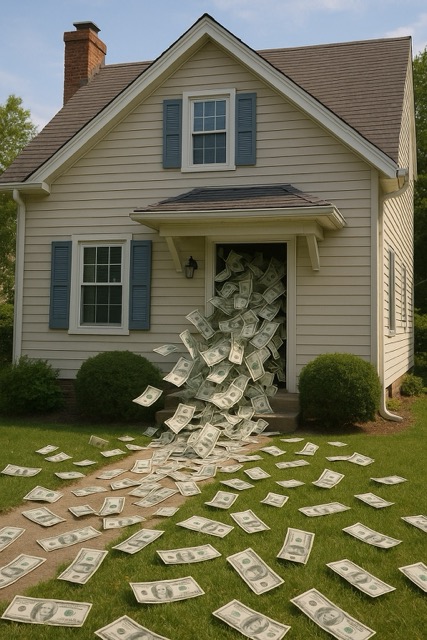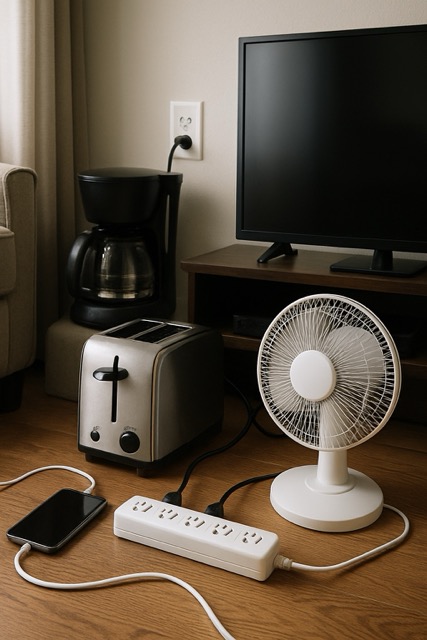If you’ve ever winced at your power bill and muttered something under your breath about your HVAC system, you’re not alone. Most homes, especially older ones, aren’t set up to be energy efficient from the start. But making small, smart updates can help you save actual cash—without living in a cold, dark house wearing three sweaters. This isn’t about going full off-grid or turning your house into a sci-fi smart home. It’s about being a little smarter with what you’ve already got and making upgrades that actually matter.

Windows That Work With You, Not Against You
Old windows are one of the worst offenders when it comes to energy loss. They let your paid-for heat and air conditioning sneak right out, especially in homes that still have single-pane glass or wood frames that have seen better decades. If you’re not quite ready to invest in new windows, there’s still plenty you can do. Weatherstripping takes maybe 15 minutes and makes a real difference. Thermal curtains aren’t just a buzzword—they actually help. And yes, caulking around the trim really does keep drafts out.
If you are ready for an upgrade, look for double- or triple-pane windows with low-E coatings. That invisible film works hard year-round—reflecting heat in the summer and keeping it in during the winter. It’s one of those updates that pays off slowly and steadily, the kind that doesn’t just boost your comfort but also your resale value.
The Case for Better Insulation
You can’t see it, which is probably why most people forget about insulation until it’s too late. But insulation is like the house’s sweater, and too many homes are walking around in a paper-thin tee. Attics are the first place to check. If your insulation up there looks like a patchy quilt or you can see the joists poking through, it’s time. You don’t need to rip your roof apart either—blown-in insulation can be added right over the old stuff.
Walls and crawlspaces matter too, especially in older houses where the insulation may have settled or just wasn’t that great to begin with. Even garage walls, if your garage is attached, can leak more air than you think. Every spot you can shore up helps. And while you’re poking around in the attic or crawlspace, make sure your ductwork is sealed. Leaky ducts are energy vampires.
If you’ve been thinking about solar but aren’t sure where to start, now’s the time to look into your options. Between new tax credits and more efficient panels, you’ll get more bang for your buck than you would’ve a few years ago. And the best solar panels don’t have to be the most expensive. It’s more about efficiency and warranties than fancy brand names. You want something that performs year-round and keeps working for the long haul.
Don’t Ignore the HVAC—and Don’t Just Blame It Either
Your heating and cooling system does a lot. If it’s running 24/7 or groaning in the middle of the night, there’s a good chance it’s struggling. That doesn’t always mean it’s time for a replacement. A dirty filter can mess with airflow more than you’d think, and blocked vents or leaky ducts only make things worse. Start with the small stuff. Change filters regularly (really do it), clear out floor vents, and make sure furniture isn’t blocking returns. Then move on to yearly maintenance.
The best part? You don’t always need a total system overhaul to get better performance. Sometimes, it’s just a matter of having a technician come out for a solid air conditioning repair that brings things back to where they should be. That’s especially true with newer units that weren’t installed correctly or older systems that just need a little attention. A lot of people jump straight to replacing their HVAC when a solid repair would’ve extended its life and lowered bills.
If your unit’s more than 10 years old, it might be worth exploring high-efficiency models, especially if you’re pairing it with other upgrades like insulation or new windows. But don’t let anyone sell you on a shiny new system until you’ve ruled out all the simpler fixes first.
Light It Up Without the Waste
Lighting isn’t the biggest drain on your electricity bill, but it’s one of the easiest fixes—and it adds up. If you’re still using incandescent bulbs out of habit or nostalgia, it’s time to break up. LEDs are so much better than they used to be, and they come in every tone and shape you’d want. You can even get ones that mimic soft Edison-style light without the old-school waste.
Pay attention to how long lights stay on too. Motion sensors work wonders in garages, hallways, and closets. Smart bulbs or timers can make sure you’re not lighting up the house like a stage show at 2 AM. And don’t forget outdoor lighting—solar-powered path lights or motion-sensing floodlights can save money without sacrificing safety or aesthetics.
It’s also worth upgrading old light fixtures if they aren’t compatible with LEDs. Some older ballasts or dimmers just don’t play nice with modern bulbs and end up wasting energy anyway. This is one of those updates that feels cosmetic but actually makes a difference behind the scenes.
The Hidden Energy Suckers Lurking in Plain Sight

Even when you think everything’s off, your appliances and electronics could still be pulling energy. Things like your coffee maker, TV, Wi-Fi router, and even phone chargers use electricity just by being plugged in. It’s not always a huge amount per device, but multiply that by everything in your house and you’ve got a steady leak.
Smart power strips are a good workaround. They automatically cut power to things that don’t need it when you’re not using them. For example, your TV and sound system can be completely powered down when you turn off the main unit, without you crawling behind a cabinet every night. Bonus: these strips often come with surge protection, so you’re killing two birds with one stone.
Another sneaky energy waster? Old appliances. That fridge in the garage from 1996? It’s probably costing more to run than it’s worth. If you’re hanging on to it just to chill a few drinks, there are better ways. Upgrading to ENERGY STAR appliances might feel like a splurge, but they usually pay for themselves in a few years.
Well Worth the Effort
You don’t have to gut your house or live by candlelight to cut down your energy use. The goal isn’t perfection—it’s progress. Start with what’s doable and keep going from there. You’ll feel the difference in how your house holds heat in winter and stays cool in summer, but even better, you’ll notice it when your next electric bill shows up. Making your home more energy efficient isn’t some massive renovation project. It’s a series of smart moves that add up to a home that works better for you.

 Tammy Litke is a Dallas blogger, blogging since 2008. She loves to watch movies, play video games, spend time in the kitchen, and travel. Between recipes and reviews you’ll find many helpful and some just plain funny posts on her blog. Welcome, pull up a chair and stay for a while!
Tammy Litke is a Dallas blogger, blogging since 2008. She loves to watch movies, play video games, spend time in the kitchen, and travel. Between recipes and reviews you’ll find many helpful and some just plain funny posts on her blog. Welcome, pull up a chair and stay for a while!